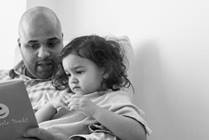Search Results
Viewing: 131-140 of 11716 | All

Condition
Omphalocele
An omphalocele is an abdominal wall defect that allows the intestine to remain outside the abdomen. An omphalocele can contain parts of the intestine, liver and other organs. The goal of surgery is to place the abdominal organs back into the baby’s body and repair the defect in the wall of the belly.

Condition
Autoimmune Hepatitis
Autoimmune hepatitis happens when something goes wrong with the body’s immune system. In autoimmune hepatitis, the immune system attacks normal liver cells. This causes damage that makes it hard for the liver to work properly.

Condition
Celiac Disease
Celiac disease is a chronic condition that results in damage to the lining of the small intestines. Symptoms are triggered by the ingestion of products that contain wheat, barley or rye proteins, collectively known as gluten.

Condition
Bilateral Renal Agenesis
Bilateral renal agenesis (BRA) is a rare and life-limiting condition in which the baby’s kidneys never develop. BRA is usually diagnosed during pregnancy. Unfortunately, there currently is not a cure for bilateral renal agenesis. These babies usually only live for a few hours after birth.
Article
Medical Records
We can provide patients, patient families and healthcare professionals with medical records such as nurse’s notes, lab tests, reports and treatment plans. Learn how.

Condition
Abdominal / Duplication Cysts
Abdominal cyst is a general term used to describe a rare, congenital birth defect that causes an irregular mass of tissue to grow in a baby’s abdomen. Growths can appear anywhere along the gastrointestinal tract or reproductive organs like the ovaries. Surgery is the most common treatment for cysts.
Osteochondritis Dissecans (OCD)
Osteochondritis Dissecans (OCD) is a condition that develops in the joints, most often in children and adolescents. OCD lesions can develop when the area of bone beneath the cartilage is injured. In children, they are most often found in the knee and elbow. They may also be found in the talus bone in the ankle.

Condition
Congenital High Airway Obstruction Syndrome (CHAOS)
Congenital high airway obstruction syndrome, or CHAOS, is a very rare condition where the fetal airway is fully or partly blocked. CHAOS is usually found during a routine prenatal ultrasound. In some cases, fetal surgery may be done to remove the blockage. Sometimes CHAOS resolves on its own.
Allergy to Latex
Latex is the milky sap from the rubber tree. It is used to make many rubber products that are used in the hospital and home. Signs of a latex allergy include skin rash or scaliness, itching, hives, swelling, watery or puffy eyes, sneezing, coughing, wheezing or difficulty breathing.
Volar Plate Injuries
The volar plate is a thick ligament that connects two bones in the finger. A volar plate injury is commonly called a jammed finger or sprain. This happens when the finger is bent backward too far (hyperextended). These injuries can also lead to a fracture (break) called an avulsion fracture.
